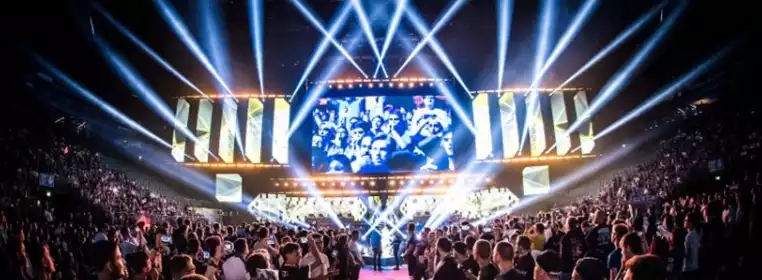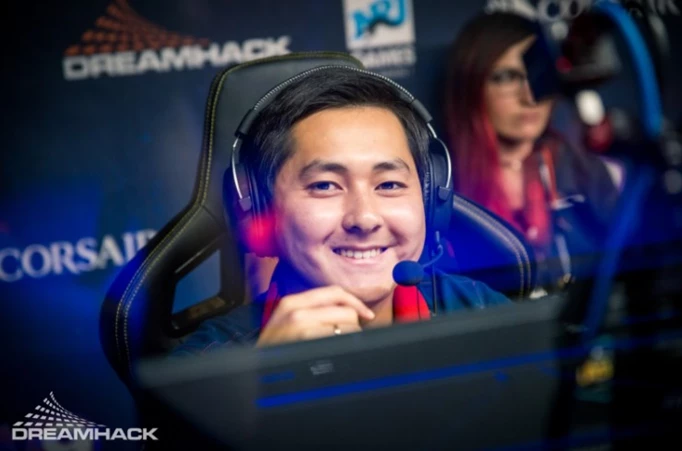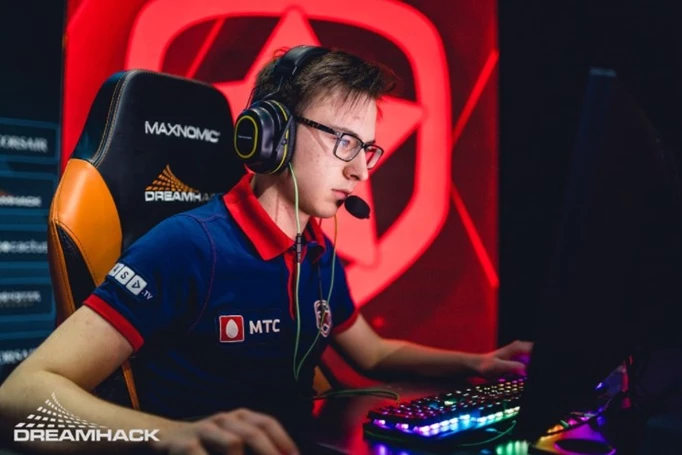Cologne Preview: Why Gambit Are The Best In The World - Part 1

Preface: The last two CS:GO LANs (IEM World Championship 2020 and Flashpoint Season 1) were over a year ago. Once the pandemic hit, CS:GO entered a prolonged uncertainty era on all levels. No one knew how long CS:GO was going to be online for and its effect on the competitive landscape.
Over a year later, we are finally getting back to LAN with ESL Cologne. Cologne isn't a true LAN in the platonic sense as there won't be giant stadiums or crowds. It is a studio environment. Even so, this midway point is a good time to unpack the context of the online era as we transition back (hopefully) into more LAN competitions.
There are a few things to keep in mind as we make the slow jump back to LAN. The first is the degree of attention and immediacy of the situation. It is hard for online competition to distinguish itself from other online competitions. As that's the case, it's hard to know how much attention each team is putting into any particular series or tournament. The TOs exacerbated the problem by increasing the amount of online matches which diluted attention and importance. This killed any lingering sense of immediacy to the games. When a player loses at a Major, they have to wait for months before the next one. Losing an online event meant waiting a day or two before the next one started up. Getting up out of bed is different from traveling to a country and going through the media, crowds, building anticipation, and traveling fatigue.
The second thing to keep in mind is fairness of competition. The division of regions and ping differential makes it impossible to put online play equivalent to LAN. Other events like the spectator bug scandal and the ability to watch the stream (even delayed) made the situation more opaque. This was a huge problem with the EPIC CIS League as they had no delays on their GOTV. It wasn’t enough just to put no delays, but they also had no anti-cheat system, teamspeak records, or replays. At that point, it’s arguable that Valve should redo the tournament, but we would run the danger of subjecting a player to the emotional distress of winning a rematch.
This has led to an even higher increase in burnout in the online period relative to LAN play. Players live to compete in front of the crowds and peers. Without that environment, overall meaning of competition was diluted even further on top of all the previously mentioned problems.
All together this created an environment where volatility was largely the norm when it came to results with teams reaching the finals of one tournament moving on to bomb the next. This is the context we need to keep in mind as we make the transition back. Even so we cannot use this context as an excuse to disregard all or even a partial amount of the results we've had across the year. It was the only competition to be had and the best measure of the teams. It is also insulting and disingenuous to disregard the achievements teams have made during this online period. All teams had to compete and should be lauded for their results and efforts even with these caveats in mind.
...
Why Gambit are the Best in the World Part 1


Gambit have been the most dominant and consistent team for 2021. Their results are outstanding. They won IEM World Championship, BLAST Spring Finals, EPIC CIS League Spring, and IEM Summer. Gambit also made the finals of two other big events: DreamHack Master Spring and EPL Season 13. Beyond those achievements, they had varying success in smaller cups and online tournies: Top four DreamHack Open January, 2nd at Snow Sweet Snow #1, top 8 at Snow Sweet Snow #2, 1st at Pinnacle Cup.
Consensus indicates that Gambit's skill and reputation as a team is beyond doubt. That is an exceptional thing to consider as every other team that made it to the top made analysts and spectators wonder how well they could do on LAN. With Gambit, no such speculation seems to exist. The results certainly washes away most of the doubt. The online era has been even more uncertain and inconsistent than the uncertainty era in late 2016 with top teams winning events to only bomb out in the event right after. Gambit has unmatched dominance and consistency in that regard.
While the results are strong, it is the eye test that kills any lingering doubts. From nearly every dimension of analysis (except for LAN experience), Gambit is impervious.
The Three Stars: sh1ro, Hobbit, Ax1Le


The broadest level of analysis is the three pillars of CS: Skill, team play, and tactics. Gambit has three stars: Dmitry "sh1ro" Sokolov, Sergey "Ax1Le" Rykhtorov, and Abay "Hobbit" Khassenov. All three of them have been fantastic during this period of CS and have almost no overlap.
Sh1ro is the AWPer of the team. The community like to draw comparisons between him and Oleksandr "s1mple" Kostyliev as they are the two best AWPers in the CIS Region. While the comparison is understandable (in that we want to rank the two best of a region head-to-head), stylistically speaking sh1ro is a mix between Dzhami "Jame" Ali and Nicolai "dev1ce" Reedtz.
Gambit utilise sh1ro more skin to how Virtus.Pro utilised Jame than how Astralis utilised dev1ce. They give him resources (space, time, utility, and a support player) to get the early picks or take control of the map. Unlike Jame, the setups aren't as resource heavy as Virtus.Pro sometimes need two players to support Jame whereas sh1ro usually only has one. What’s more the one is almost never in a dangerous or precarious position. In addition, sh1ro’s setups aren’t nearly as passive or idiosyncratic as Jame’s. While Gambit like playing the sh1ro trade game, sh1ro can also play the point. Like dev1ce, he takes the best odds. Safe angles that still give a good chance for the first pick with fall back options.
Sh1ro’s mid-to-late round is similar to dev1ce as well. Sh1ro has a rotational style that emphasises the structure and tactics of the team. He will usually put himself into a position to setup a smoke to cover a lane or a flash play and then go on to control an area with his AWP. The major difference here is that dev1ce has more responsibility as he was still the focal point of Astrali’s mid-round defense most of the time, whereas the focal point shifts from sh1ro to either hobbit or Ax1Le.
Even so, sh1ro is willing to take the aggressive option in the mid-round if that is the team's best option. Individually, dev1ce and sh1ro have similar characteristics in the late round: great at clutching, great at knowing when to save the AWP, and when to go for the retake. Finally, sh1ro has flashes of individual brilliance where he wins a hard or nigh-impossible round. However, we rarely see these glimpses as Gambit rarely gets into situations where sh1ro has to dig that deep.
The other two stars of the team are Ax1L eand Hobbit. Alex "Mauisnake" Ellenberg calls them the best 1-2 punch in the world in his demo review:
What makes Ax1Le and Hobbit so powerful to me is that they almost share similar roles, but the differences in their play and positions means that there is no overlap for resources whether that's space, time, or utility. On the T-side, Ax1Le and Hobbit are versatile wing players. Both are strongest in individual solo play as mid-round lurk entry players. While each alone is a strong player, the two of them really come alive when paired together. This is particularly odd as they play opposite sides of the map, but Gambit's playstyle is about taking map control, creating space, creating rotations, and lurking into the holes of the defense that those rotations create.
In that sense, Ax1Le and Hobbit have some of the best synergy of any duo in the game and both of them are still great playing in the main pack, whether that’s as part of a binomial or trinomial. If I had to say which of the two is better, I'd side with Hobbit. While both Ax1Le and Hobbit can pull Gambit out of bad 4v5 or 3v5 situations, Hobbit has more success at it. Hobbit also plays the small-site of Inferno which is a critical position on the most important map in the game.
The Role Players: Nafany and interz
Vladislav "nafany" Gorshkov and Timofey "interz" Yakushin round out the squad as role players. I don't think they are star players, but both are good role players. Nafany has proven himself to be one of the best in-game leaders in the world tactically (though it's hard to know how much we should credit him or credit Gambit's coach Konstantin "groove" Pikiner). Stylistically, nafany is the classic entry space-making in-game leader.
While nafany isn't that effective at getting the kill, Gambit can trade his kills or use the information he gets to out-rotate the enemy. His individual skill isn't the best, but Nafany's game sense is sharp. If he's alive in a small-man situation, he often makes the correct lurks to flank or cut off the enemy. Interz is the least flashy among all of the players. While his stats don't stand out, I've never seen him make an actual blunder or put his team into danger. He does his job and can have legitimately strong impact moments (as a space creator, hard entry, or anchor).
Team play and Tactics
Gambit have the best team play in the world. On the macro level, they have brilliant rotations, trades, and great utility support. Individually, they consistently do little things to create space and play off of each other. For instance, they are very good at creating space by drawing the focus of enemy crosshairs.
You can see an example of this from the EG inferno game at BLAST Spring Finals that come to mind. In the second round of overtime of the game, Gambit went for a split on A-site. EG had put the smoke for apartments to stall out Ax1Le. Nafany did a jump bait for lane, which drew the focus of the EG players. This gave Ax1Le the space to push the smoke and kill the players on the site.
Tactically, Gambit are master class. Gambit has great set plays, defaults, change-ups, and rotations. Doing a deep analysis will make this article too long, so for now I'll focus on two rounds that explains Gambit's best tactical strengths: one T-side round and one CT-side round.
The T-side round comes from the upper bracket finals against Na`Vi at BLAST Finals.
It is the fourth round on Mirage. In this round, Gambit decide to take mid-control and insert nafany into a lurking role into window. They do this after tentative information from interz at T-main and Ax1Le in B halls. To give nafany the best chance possible, Hobbit comes from underpass and unloads his utility. He uses a smoke to cover window, then a HE and molly combination to clear cat room. He then spams the smoke, before boosting nafany in. Hobbit then takes one more look for short and passes that info to nafany. Nafany can then put all of his focus towards jungle and uses the smoke to get the entry kill on Denis "electronic" Sharipov.
While all of that is going on, the rest of Gambit are prepping for a potential B-split. Ax1Le make a lurk entry move towards B-hall to try to get as much info as he can on the defensive setup. S1mple kills him, so this leaves Gambit in a 4v4. However this is all of the information that Gambit needs as they rightly assess that Na`Vi had three towards B. Nafany is in perfect position to cut off rotations and what was looking like a potential 3v3 into the B-site turns into a 3v1 as Gambit hit the a-site instead. Gambit uses structured tactics to setup individual plays that pressures and distorts the defense. They get that info and then make the correct lurks and mid-round calls to close the game.
Gambit's CT-side functions in a similar manner. In the IEM Summer Finals, Gambit played OG on Mirage. In the 22nd round, Gambit are on a force buy with three smokes, a molly, a rifle, and a scout. Ax1Le was the player with the rifle and three of the nades as he had saved all of it from a previous round (worth noting that Gambit consistently save weapons and make the most of them in following rounds). Gambit opened with two smokes, one for T-main to stop a rush and one for deep B-halls. Ax1Le was positioned in mid and took a dry peek out.
As interz pushed B, Gambit made the instant call to stack four on A. Ax1Le dropped his molly to prevent potential picks from OG's side. This bought time for the smoke at T-main to dissipate, which then let sh1ro pop-flash Hobbit in for a kill. Ax1Le dropped the final smoke to buy time for interz's flank. The flank was in perfect position as it could have won the round, but it failed. Even in failure though, Gambit got the info to make a rotate towards B and nearly won the round off of sh1ro's scout play.
Gambit uses their tactics and structure to put their individuals in the best position possible to get something off the map: whether it's info, pressure, kills, or a trade. From there they make intelligent rotations or stacks to close out the round and win the game.
We've gone over an analysis of the three pillars of CS. Next time, I'll analyse Gambit's particular style, play variance, and map pool.